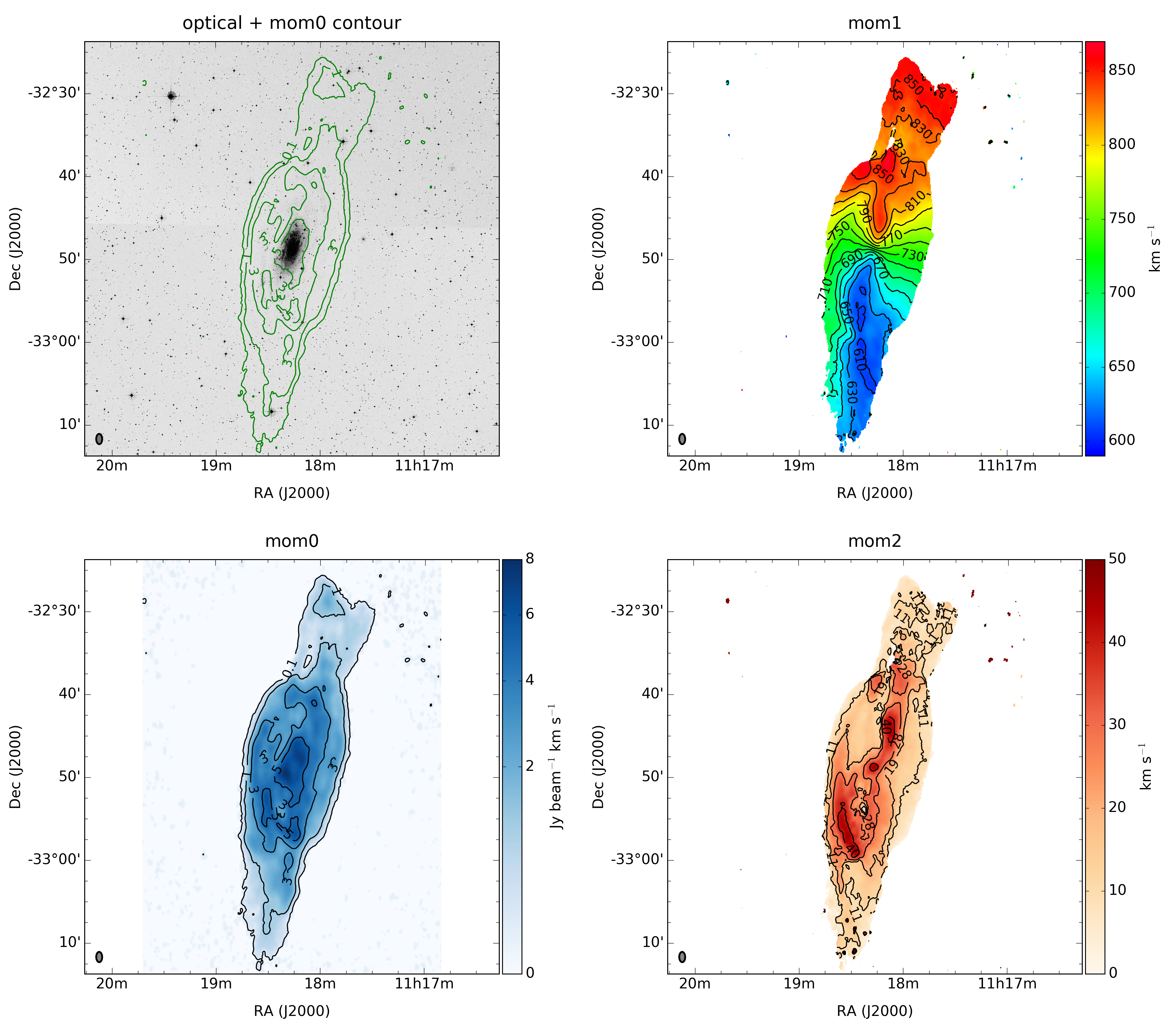NGC 3621

NGC 3621 (HIPASS J1118-32)
is a late-type spiral galaxy at a cepheid distance of 6.70 ±
0.47 Mpc (Ferrarese et al. 2000). To date NED shows a diverse collection of
~50 independent distances. Its stellar disc has a diameter of about 12 arcmin
× 7 arcmin, while the GALEX UV emission extends about 20 arcmin
× 10 arcmin (Thilker et al. 2007). NGC 3621 appears to be rather
isolated; its nearest neighbours are the newly discovered dwarf galaxies
HIPASS J1131-31 and HIPASS J1132-32, both ~3 degrees away. Our 3-pointing
ATCA HI mosaic reveals the extended HI emission of NGC 3621, spanning over
40 arcmin (Koribalski 2017), a factor two beyond its remarkable XUV
disc. The ATCA HI velocity field hints at a strong warp of the outer disc.
Peculiar motions are also evident in the HI velocity dispersion map. Our
ATCA FHI estimate of 856.8 Jy km/s is in good agreement with
previous single-dish estimates (see Koribalski et al. 2004). We derive
MHI = 9.1 × 109 M☉.
Single-pointing VLA HI maps,
taken as part of the THINGS project (Walter et al. 2008), reveal only the
inner part of the galaxy (FHI = 679 Jy km/s), missing the peculiar
extended emission towards the north and south. De Blok et al. (2008) find a
slightly rising rotation curve out to a radius of 13.5 arcmin (26 kpc) with
vrot = 150 km/s, i ~ 65 degr, and PA ~ 345 degr. Beyond that
radius the HI distribution and kinematics change significantly, as shown in
our ATCA HI maps, possibly due to the accretion of a companion. The ATCA HI
maps were first analysed and discussed by Walsh (1997).
Reference:
Koribalski et al. 2018
* LVHIS database
* LVHIS homepage
* next